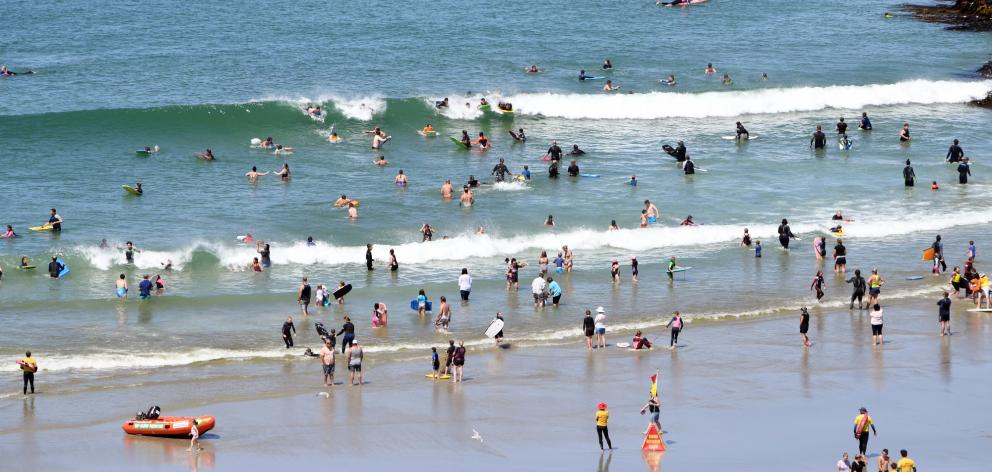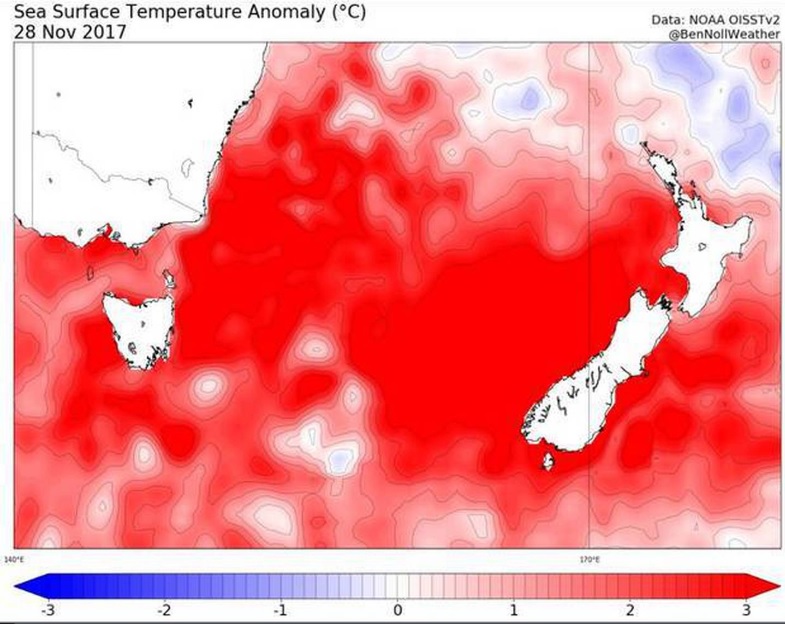
Professor Jim Salinger said it was possible a "marine heatwave" for 2020-21 could even approach the scale of a freakish event three years ago, while fuelling high temperatures on land.
A Niwa meteorologist today also said the chances of a La Niña climate system playing with our weather over coming months was now highly likely, while the potential for a marine heatwave "certainly has our attention".
An advisory posted late last week by the US-based Climate Prediction Centre and other major agencies reported La Niña conditions were present and 75 per cent likely to continue through the Northern Hemisphere winter.
Niwa's most recent climate outlook, issued at the start of this month, put the probability of a La Niña developing in the Pacific before late November at 57 per cent, with most of its criteria for alert status having been met.
The last time a strong La Niña formed up was back in 2010-11, with weaker systems in 2016-17 and 2017-18, and a moderate one in 2011-12.
During a La Niña event, ocean water from off the coast of South America to the central tropical Pacific cooled to below average - a result of stronger than normal easterly trade winds, which churned cooler, deeper sea water up to the ocean's surface.
This unusually cool water in the eastern Pacific then suppressed cloud, rain, and thunderstorms, as sea temperatures in the far west of the ocean warmed to above average temperatures.
Here in New Zealand, more northeasterly winds typically brought rainy conditions to North Island's northeast, and drier conditions to the south and southeast of the South Island - the reverse picture of an El Niño.

The weak La Niña of 2017-18 helped set up an unusually intense marine heatwave around New Zealand over what proved the country's hottest summer, along with another ingredient that Salinger said appeared to also be stepping back on to the stage.
That was the Southern Annular Mode, or SAM - a constantly-flipping indicator of storminess in latitudes around and deep below New Zealand - just switching to a positive phase.
A "positive" SAM had meant there were weaker westerly winds than normal over the South Island with higher pressures - and less cold fronts crossing New Zealand with bursts of cold air.
In a positive phase, it also blocked highs to the east of the country, and sometimes bulging back over New Zealand, with mild northerly airflows across New Zealand.
Salinger said that, as the SAM had swung positive, seas would begin to calm, helping prime oceans for heatwave conditions.
Over the short-term, he expected north-westerly winds to continue this month and into some of next month, before north-easterlies and "big southern highs" would become more frequent weather systems.
"Over the summer holidays, it'll be great to go to the west and south of the South Island - areas like the southern lakes will be the places to be."
More broadly, warmed coastal waters could drive what he described as a "New Zealand regional heatwave" - with particularly hot days over much of the country over summer.
Niwa meteorologist Chris Brandolino said the climate conditions were continuing to trend toward an emerging La Niña, although the Pacific ocean and atmosphere needed to "couple" for an extended period before one could be formally declared.
"The majority of dynamical models we use which help us to not only understand weather, but also climate, are indicating that we will be in a La Niña as spring unfolds, and as we head into summer," he said.
"It's certainly more likely than not."
Brandolino said La Niña in New Zealand had historically been linked with warm sea temperatures - and waters around the country had already been running near or above average.
Some models were indicating a "significant signal" for ocean temperatures to become "unusually abnormal".
"That's important because, basically, if our ocean temperatures are above average, there is a pretty high likelihood we will have above average air temperatures," he said.
"The fact that there are signals for this to continue - and some of these are quite strong - the potential for a marine heatwave certainly has our attention."
But Brandolino thought it too early to say whether a marine heatwave would play out, or reach the extremes of the event over 2017-18, when sea surface temperatures were pushed to 1.5C above average, and as high as 6C above normal in some spots off the West Coast.
But Salinger said it was possible a 2020-21 could be of "similar magnitude".
If one did unfold again, it would prove the third in just four years.
The impact of the back-to-back events between 2017 and 2019 was perhaps seen nowhere more starkly than on our glaciers, which shrank amid one of the largest melts ever observed in the Southern Alps.
Marine heatwaves also have dramatic consequences for ocean ecosystems - sometimes even bringing tropical fish into colder climes - and are expected to grow stronger, longer and more frequent under climate change.
Comments
Global warming or still coming out of an ice age? Bring on the summer.
Decades of research on the subject by 100's of thousands of scientists across the globe and the answer? It's global warming.
Though 'Human-Induced Climate Change' is perhaps more accurate. Some people think Global Warming means any cold weather disproves it!












